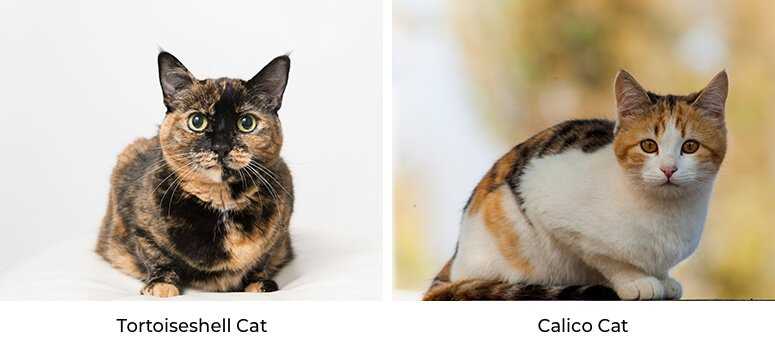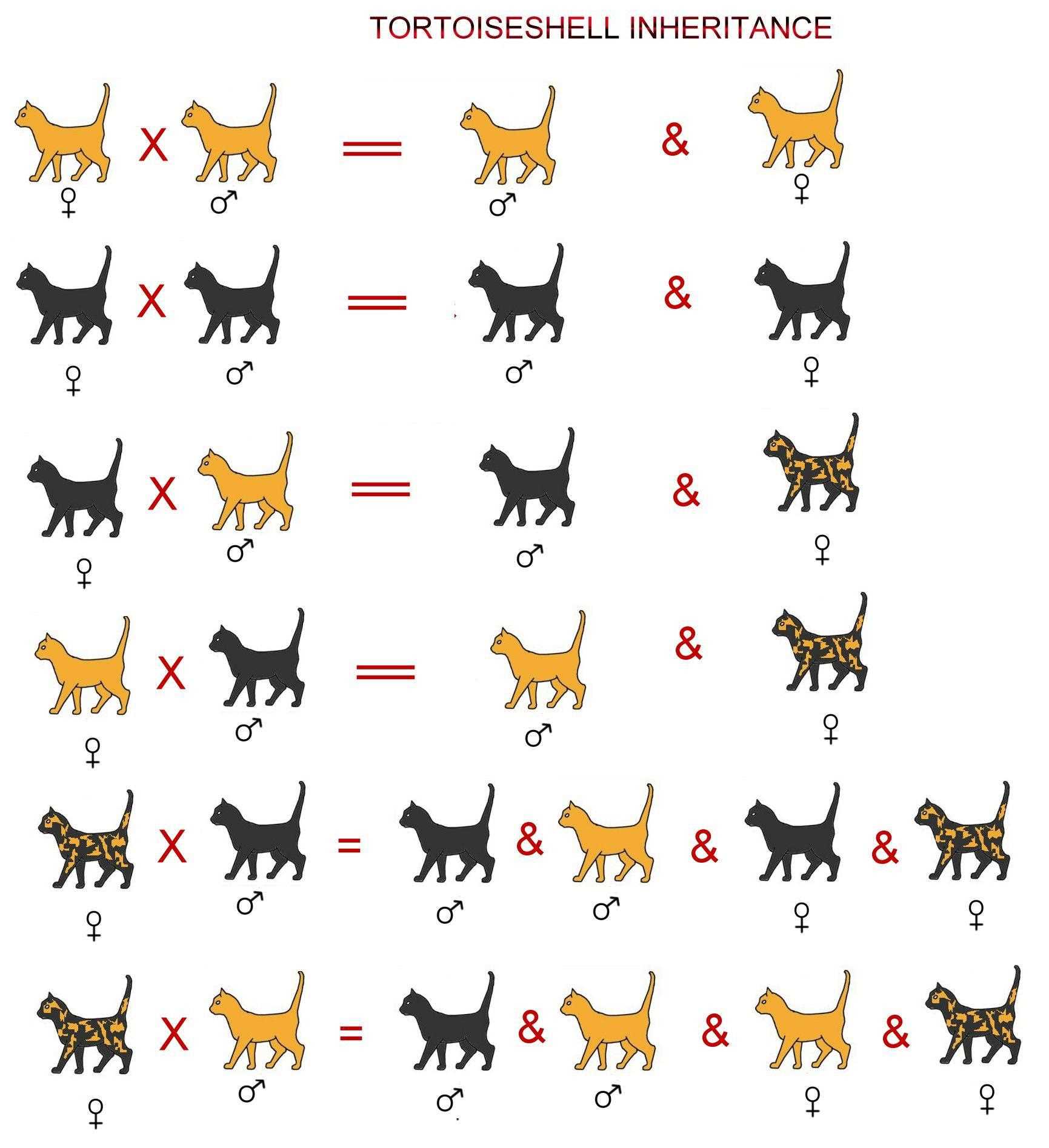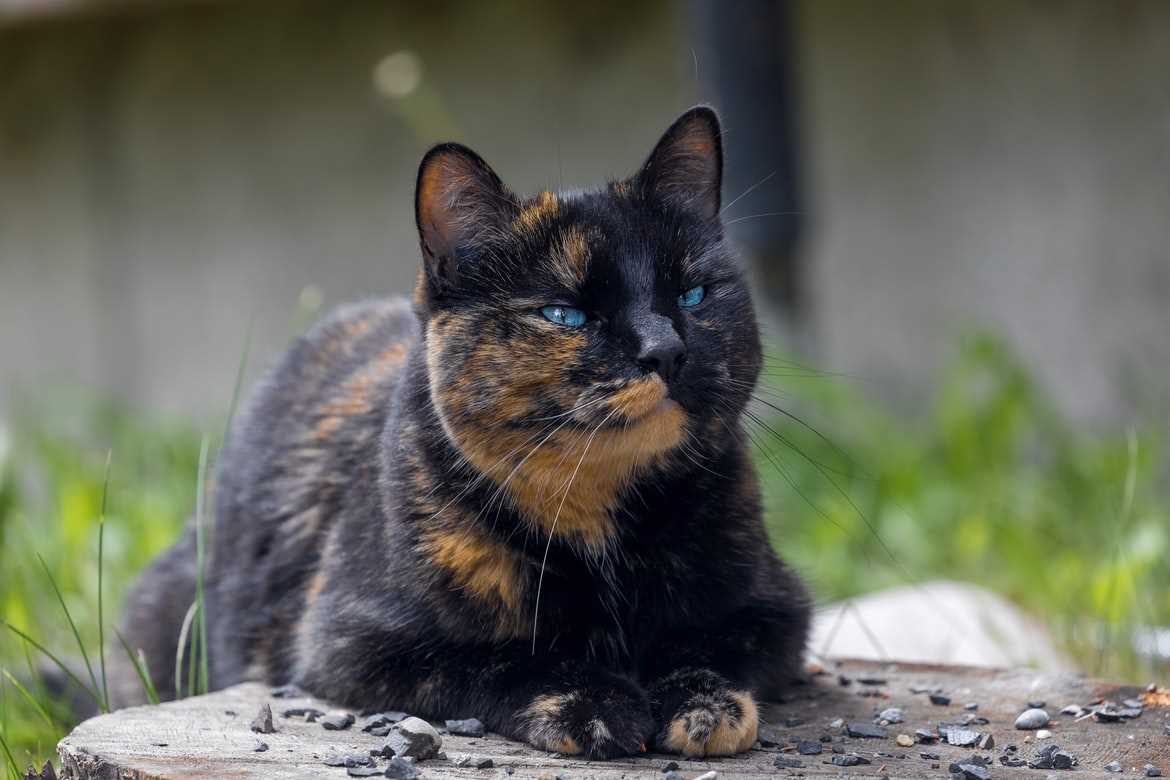Curious about the gender distribution among those unique fur patterns? While most with a tri-color appearance are indeed girls, exceptions do exist. It’s estimated that only 1 in 3,000 of these colorful beauties are male.
The fascinating genetics behind this color variation stem from the X chromosome. Females possess two X chromosomes, allowing for the mix of colors, while males typically have one. Consequently, the odds favor the fairer sex when it comes to these striking coats.
For those intrigued by adopting or breeding, knowing this fact can be essential. If you encounter a male with this distinctive fur, be prepared for a rarity that can sometimes come with health complications.
Understanding the Genetics of Tortie Cats

Genetic makeup plays a significant role in my unique coat colors and patterns. The combination of two different color genes on the X chromosomes is what creates my striking appearance. Female individuals typically possess two X chromosomes, allowing for a mix of colors, while males generally have one X and one Y chromosome, limiting their color options.
Color Inheritance

Color genes are inherited from both parents. The X chromosome carries the orange (O) and black (o) genes, leading to a blend of these colors in females. Male counterparts with one X chromosome can only display one of these hues–either orange or black. This genetic arrangement explains why I, as a Scottish Fold with this particular pattern, often see more females in my circle exhibiting this coloration.
Exceptions and Variations
While most individuals with this coloring are female, there can be exceptions. Rare genetic mutations can result in male individuals displaying a similar pattern, often requiring a special genetic configuration like XXY. These cases are uncommon but illustrate the complexity of genetic inheritance in feline species.
Exceptions: Male Tortie Cats and Their Rarity
Male felines with this unique coat pattern are exceedingly rare, occurring in approximately 1 in 3,000 instances. This rarity stems from the genetic makeup required for such coloring, which typically requires two X chromosomes. Most male specimens possess only one X and one Y chromosome, leading to a predominantly monochromatic or tabby appearance.
Genetic Anomalies
However, certain genetic anomalies can result in the rare occurrence of a male with the distinctive coloration. One significant condition is Klinefelter syndrome, where males have an additional X chromosome, resulting in an XXY configuration. This genetic variation allows the display of the multicolored coat pattern, making these boys truly exceptional in the feline world.
Behavior and Temperament

The behavior and temperament of male specimens displaying this pattern can be just as varied as their female counterparts. Some may exhibit traits commonly attributed to their gender, while others might showcase more playful or affectionate tendencies. Individual personality often takes precedence over genetic predisposition, so each one presents a unique character profile.
Identifying Tortie Patterns: Coloration and Traits
For anyone looking to recognize specific patterns in these multi-colored felines, focus on the unique blend of colors. Typically, a mix of black, orange, and cream hues is prevalent. The distinct patches often appear in a mosaic-like arrangement, showcasing both bold and subtle variations.
Look for uneven distribution of colors; this characteristic is key. Unlike tabby or solid-colored breeds, the patches should not form any predictable patterns. Instead, expect a random assortment that can appear anywhere on the coat, including the face, legs, and tail.
Another recognizable trait is the presence of white fur. Some may exhibit small areas of white, especially on their chests or paws, adding contrast to the primary colors. This can enhance the overall visual appeal, making them even more striking.
Behaviorally, these unique beauties often show a spirited personality. They can be playful, curious, and occasionally sassy. Each one has its own quirks, which adds to their charm. If you’re curious about their health, it’s advisable to monitor any dietary changes, as this can affect their well-being. For instance, if your furry companion experiences digestive issues, check out this link on how long will my cat have diarrhea after changing food.
In summary, identifying these lovely creatures involves looking for a combination of color patterns, random patchwork, and a lively temperament that sets them apart from other breeds.
Impact of Genetics on Feline Behavior and Health
Genetic makeup significantly influences personality traits and wellness in these colorful creatures. Specific genes associated with coat coloration also impact behavior and health status. For instance, the gene responsible for the unique blend of hues can relate to temperamental tendencies, often making them more independent and assertive.
Additionally, certain health issues are prevalent among individuals carrying the tortoiseshell pattern. These might include:
- Dental problems due to jaw misalignment.
- Increased chances of autoimmune disorders.
- Higher susceptibility to certain genetic conditions.
Regular vet check-ups are crucial. Keeping an eye on any behavioral changes or physical health concerns ensures early intervention. A nutritious diet and proper exercise also play essential roles in maintaining optimal health.
Understanding the genetics behind their behavior allows for better management and care practices. For those considering declawing, it’s vital to evaluate the potential costs involved in the procedure. You can learn more about this aspect here.
Being aware of these genetic influences can enhance the relationship between humans and their feline companions, fostering a more harmonious environment for everyone involved.
Curious about the gender distribution among those unique fur patterns? While most with a tri-color appearance are indeed girls, exceptions do exist. It’s estimated that only 1 in 3,000 of these colorful beauties are male.
The fascinating genetics behind this color variation stem from the X chromosome. Females possess two X chromosomes, allowing for the mix of colors, while males typically have one. Consequently, the odds favor the fairer sex when it comes to these striking coats.
For those intrigued by adopting or breeding, knowing this fact can be essential. If you encounter a male with this distinctive fur, be prepared for a rarity that can sometimes come with health complications.
Understanding the Genetics of Tortie Cats

Genetic makeup plays a significant role in my unique coat colors and patterns. The combination of two different color genes on the X chromosomes is what creates my striking appearance. Female individuals typically possess two X chromosomes, allowing for a mix of colors, while males generally have one X and one Y chromosome, limiting their color options.
Color Inheritance

Color genes are inherited from both parents. The X chromosome carries the orange (O) and black (o) genes, leading to a blend of these colors in females. Male counterparts with one X chromosome can only display one of these hues–either orange or black. This genetic arrangement explains why I, as a Scottish Fold with this particular pattern, often see more females in my circle exhibiting this coloration.
Exceptions and Variations
While most individuals with this coloring are female, there can be exceptions. Rare genetic mutations can result in male individuals displaying a similar pattern, often requiring a special genetic configuration like XXY. These cases are uncommon but illustrate the complexity of genetic inheritance in feline species.
Exceptions: Male Tortie Cats and Their Rarity
Male felines with this unique coat pattern are exceedingly rare, occurring in approximately 1 in 3,000 instances. This rarity stems from the genetic makeup required for such coloring, which typically requires two X chromosomes. Most male specimens possess only one X and one Y chromosome, leading to a predominantly monochromatic or tabby appearance.
Genetic Anomalies
However, certain genetic anomalies can result in the rare occurrence of a male with the distinctive coloration. One significant condition is Klinefelter syndrome, where males have an additional X chromosome, resulting in an XXY configuration. This genetic variation allows the display of the multicolored coat pattern, making these boys truly exceptional in the feline world.
Behavior and Temperament

The behavior and temperament of male specimens displaying this pattern can be just as varied as their female counterparts. Some may exhibit traits commonly attributed to their gender, while others might showcase more playful or affectionate tendencies. Individual personality often takes precedence over genetic predisposition, so each one presents a unique character profile.
Identifying Tortie Patterns: Coloration and Traits
For anyone looking to recognize specific patterns in these multi-colored felines, focus on the unique blend of colors. Typically, a mix of black, orange, and cream hues is prevalent. The distinct patches often appear in a mosaic-like arrangement, showcasing both bold and subtle variations.
Look for uneven distribution of colors; this characteristic is key. Unlike tabby or solid-colored breeds, the patches should not form any predictable patterns. Instead, expect a random assortment that can appear anywhere on the coat, including the face, legs, and tail.
Another recognizable trait is the presence of white fur. Some may exhibit small areas of white, especially on their chests or paws, adding contrast to the primary colors. This can enhance the overall visual appeal, making them even more striking.
Behaviorally, these unique beauties often show a spirited personality. They can be playful, curious, and occasionally sassy. Each one has its own quirks, which adds to their charm. If you’re curious about their health, it’s advisable to monitor any dietary changes, as this can affect their well-being. For instance, if your furry companion experiences digestive issues, check out this link on how long will my cat have diarrhea after changing food.
In summary, identifying these lovely creatures involves looking for a combination of color patterns, random patchwork, and a lively temperament that sets them apart from other breeds.
Impact of Genetics on Feline Behavior and Health
Genetic makeup significantly influences personality traits and wellness in these colorful creatures. Specific genes associated with coat coloration also impact behavior and health status. For instance, the gene responsible for the unique blend of hues can relate to temperamental tendencies, often making them more independent and assertive.
Additionally, certain health issues are prevalent among individuals carrying the tortoiseshell pattern. These might include:
- Dental problems due to jaw misalignment.
- Increased chances of autoimmune disorders.
- Higher susceptibility to certain genetic conditions.
Regular vet check-ups are crucial. Keeping an eye on any behavioral changes or physical health concerns ensures early intervention. A nutritious diet and proper exercise also play essential roles in maintaining optimal health.
Understanding the genetics behind their behavior allows for better management and care practices. For those considering declawing, it’s vital to evaluate the potential costs involved in the procedure. You can learn more about this aspect here.
Being aware of these genetic influences can enhance the relationship between humans and their feline companions, fostering a more harmonious environment for everyone involved.
Curious about the gender distribution among those unique fur patterns? While most with a tri-color appearance are indeed girls, exceptions do exist. It’s estimated that only 1 in 3,000 of these colorful beauties are male.
The fascinating genetics behind this color variation stem from the X chromosome. Females possess two X chromosomes, allowing for the mix of colors, while males typically have one. Consequently, the odds favor the fairer sex when it comes to these striking coats.
For those intrigued by adopting or breeding, knowing this fact can be essential. If you encounter a male with this distinctive fur, be prepared for a rarity that can sometimes come with health complications.
Understanding the Genetics of Tortie Cats

Genetic makeup plays a significant role in my unique coat colors and patterns. The combination of two different color genes on the X chromosomes is what creates my striking appearance. Female individuals typically possess two X chromosomes, allowing for a mix of colors, while males generally have one X and one Y chromosome, limiting their color options.
Color Inheritance

Color genes are inherited from both parents. The X chromosome carries the orange (O) and black (o) genes, leading to a blend of these colors in females. Male counterparts with one X chromosome can only display one of these hues–either orange or black. This genetic arrangement explains why I, as a Scottish Fold with this particular pattern, often see more females in my circle exhibiting this coloration.
Exceptions and Variations
While most individuals with this coloring are female, there can be exceptions. Rare genetic mutations can result in male individuals displaying a similar pattern, often requiring a special genetic configuration like XXY. These cases are uncommon but illustrate the complexity of genetic inheritance in feline species.
Exceptions: Male Tortie Cats and Their Rarity
Male felines with this unique coat pattern are exceedingly rare, occurring in approximately 1 in 3,000 instances. This rarity stems from the genetic makeup required for such coloring, which typically requires two X chromosomes. Most male specimens possess only one X and one Y chromosome, leading to a predominantly monochromatic or tabby appearance.
Genetic Anomalies
However, certain genetic anomalies can result in the rare occurrence of a male with the distinctive coloration. One significant condition is Klinefelter syndrome, where males have an additional X chromosome, resulting in an XXY configuration. This genetic variation allows the display of the multicolored coat pattern, making these boys truly exceptional in the feline world.
Behavior and Temperament

The behavior and temperament of male specimens displaying this pattern can be just as varied as their female counterparts. Some may exhibit traits commonly attributed to their gender, while others might showcase more playful or affectionate tendencies. Individual personality often takes precedence over genetic predisposition, so each one presents a unique character profile.
Identifying Tortie Patterns: Coloration and Traits
For anyone looking to recognize specific patterns in these multi-colored felines, focus on the unique blend of colors. Typically, a mix of black, orange, and cream hues is prevalent. The distinct patches often appear in a mosaic-like arrangement, showcasing both bold and subtle variations.
Look for uneven distribution of colors; this characteristic is key. Unlike tabby or solid-colored breeds, the patches should not form any predictable patterns. Instead, expect a random assortment that can appear anywhere on the coat, including the face, legs, and tail.
Another recognizable trait is the presence of white fur. Some may exhibit small areas of white, especially on their chests or paws, adding contrast to the primary colors. This can enhance the overall visual appeal, making them even more striking.
Behaviorally, these unique beauties often show a spirited personality. They can be playful, curious, and occasionally sassy. Each one has its own quirks, which adds to their charm. If you’re curious about their health, it’s advisable to monitor any dietary changes, as this can affect their well-being. For instance, if your furry companion experiences digestive issues, check out this link on how long will my cat have diarrhea after changing food.
In summary, identifying these lovely creatures involves looking for a combination of color patterns, random patchwork, and a lively temperament that sets them apart from other breeds.
Impact of Genetics on Feline Behavior and Health
Genetic makeup significantly influences personality traits and wellness in these colorful creatures. Specific genes associated with coat coloration also impact behavior and health status. For instance, the gene responsible for the unique blend of hues can relate to temperamental tendencies, often making them more independent and assertive.
Additionally, certain health issues are prevalent among individuals carrying the tortoiseshell pattern. These might include:
- Dental problems due to jaw misalignment.
- Increased chances of autoimmune disorders.
- Higher susceptibility to certain genetic conditions.
Regular vet check-ups are crucial. Keeping an eye on any behavioral changes or physical health concerns ensures early intervention. A nutritious diet and proper exercise also play essential roles in maintaining optimal health.
Understanding the genetics behind their behavior allows for better management and care practices. For those considering declawing, it’s vital to evaluate the potential costs involved in the procedure. You can learn more about this aspect here.
Being aware of these genetic influences can enhance the relationship between humans and their feline companions, fostering a more harmonious environment for everyone involved.






